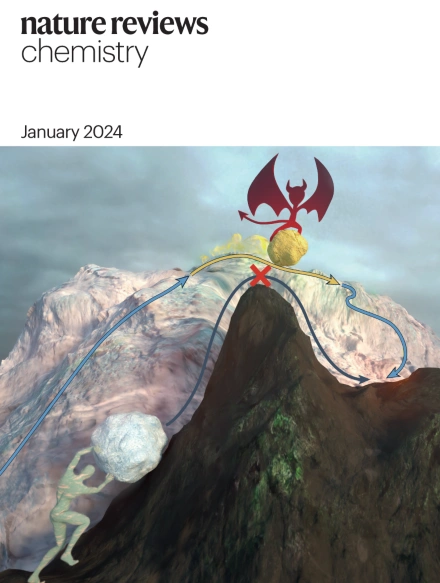Core mission: mRNA endosomal escape
IF 51.7
1区 化学
Q1 CHEMISTRY, MULTIDISCIPLINARY
引用次数: 0

核心任务:mRNA内体逃逸
作为一种很有前景的治疗工具,信使RNA (mRNA)必须被引导到特定的细胞亚群,进入它们,并被翻译成蛋白质。然而,这一旅程并非没有生物障碍。对于旨在利用mRNA治疗肿瘤的科学家来说,它必须克服内体逃逸不足的问题。当我们的细胞遇到外源性物质,包括裸mRNA,并将它们隔离在内体囊泡中进行降解时,就会出现这个问题。因此,为了避免被捕获,mRNA需要被封装在专门的递送载体中,以实现内体逃逸以进行蛋白质翻译。有了这些rna,研究小组现在可以护送mRNA到达目的地,并在体外观察mRNA治疗的效果。他们将携带报告基因mRNA的rna传递到巨噬细胞系中,作为tam的模型,在巨噬细胞系中,通过产生更多的报告蛋白,rna超过了常用的商业转染剂。此外,他们研究并证实,在mRNA有效载荷中添加增强内体逃逸的小分子将进一步促进mRNA内体逃逸。然而,将这些小分子与rnc结合会增加剂量依赖性的细胞毒性。
本文章由计算机程序翻译,如有差异,请以英文原文为准。
求助全文
约1分钟内获得全文
求助全文
来源期刊

Nature reviews. Chemistry
Chemical Engineering-General Chemical Engineering
CiteScore
52.80
自引率
0.80%
发文量
88
期刊介绍:
Nature Reviews Chemistry is an online-only journal that publishes Reviews, Perspectives, and Comments on various disciplines within chemistry. The Reviews aim to offer balanced and objective analyses of selected topics, providing clear descriptions of relevant scientific literature. The content is designed to be accessible to recent graduates in any chemistry-related discipline while also offering insights for principal investigators and industry-based research scientists. Additionally, Reviews should provide the authors' perspectives on future directions and opinions regarding the major challenges faced by researchers in the field.
 求助内容:
求助内容: 应助结果提醒方式:
应助结果提醒方式:


